Table of Contents
Can you MIG weld in the wind? The answer to this question is not just a simple yes or no. Welding in windy conditions poses unique challenges that demand careful consideration and specific techniques. In this ultimate guide, we delve into the intricacies of MIG welding when faced with gusty winds. From understanding the potential consequences of welding in such conditions to providing practical tips for overcoming these challenges, this article aims to be your go-to resource. If you’re a welder seeking to master the art of welding in adverse weather, read on for essential insights that could make all the difference in your next project.
2. Safety Considerations
Is it safe to weld in the wind? Maximum Wind Velocity
- Determining Safe Conditions for Welding: Welding safety is paramount, and the presence of wind adds an extra layer of concern. Before embarking on any welding project in windy conditions, it’s crucial to assess the safety parameters. Consider factors such as wind speed, direction, and consistency. A sudden gust can disrupt the welding arc, compromise the weld pool, and pose a risk to the welder and surrounding environment.
- What Is The Maximum Wind Speed For Welding? Understanding the maximum wind speed suitable for welding is key to ensuring a secure working environment. While there isn’t a universal wind speed limit, as it can vary based on welding methods and equipment, a general guideline is to avoid welding in winds exceeding 5-10 mph. Beyond this range, the risk of arc instability and weld contamination significantly increases.
It is imperative that these safety concerns are followed at all times. When it’s windy, even skilled welders should put safety ahead of getting the job done quickly. By setting safe limits and being aware of the possible risks, welders can make decisions that keep them safe and help the welding process go smoothly. We will talk about specific welding techniques that can be used to make welding in the wind less difficult in the next part.
3. Welding Techniques in Windy Conditions
4 Tips for MIG Welding in the Wind
Welding in the wind requires a strategic approach to maintain the integrity and quality of the weld. Here are four essential tips for MIG welding in windy conditions:
- Using Welding Blankets for Protection: Deploying welding blankets acts as a simple yet effective solution to shield the welding area from the wind. These fire-resistant blankets create a barrier, preventing gusts from interfering with the welding arc and protecting the molten metal from exposure. Additionally, welding blankets help maintain a stable temperature, reducing the risk of weld contamination.
- Placing Shields: Enhancing Welding Precision: Installing physical shields around the welding site can deflect the wind and minimize its impact on the welding process. These shields can be portable or fixed, providing a reliable means of creating a controlled environment for welding. By reducing the direct influence of wind on the welding arc, welders can achieve greater precision and consistency in their work.
- Switching to Flux Core: A Wind-Resistant Alternative: Flux core welding wire, as opposed to solid wire, is designed to be more resistant to atmospheric conditions, including wind. The flux coating on the wire creates a protective shield around the molten metal, reducing its vulnerability to external elements. This makes flux core welding a viable alternative when traditional MIG welding might be compromised by windy conditions.
- Gas Adjustment: Turning Up the Heat: In windy environments, adjusting the gas flow becomes crucial to maintain the stability of the welding arc. Increasing the gas flow rate can compensate for the dispersal caused by the wind, ensuring proper shielding of the weld pool. Welders should monitor and adjust the gas settings as needed throughout the welding process to counteract the effects of wind and achieve optimal weld quality.
By incorporating these tips into your welding practices, you can enhance your ability to MIG weld successfully in windy conditions. Each technique addresses specific challenges posed by the wind, providing practical solutions to maintain weld quality, precision, and safety. In the subsequent sections, we will explore further aspects of welding in different weather conditions and the considerations for outdoor MIG welding.
4. Outdoor MIG Welding
Can You MIG Weld Outdoors?
Welding outdoors presents a unique set of challenges, and MIG welding is no exception. While it is technically possible to MIG weld in an outdoor setting, there are important considerations and precautions that welders should be aware of.
1. Weighing the Risks: Why MIG Welding Outdoors Is Not Recommended:
MIG welding outdoors comes with inherent risks that can affect the quality of the weld and the safety of the welder. The primary concern is the exposure to environmental elements, including wind, rain, and fluctuating temperatures. Wind, in particular, can disrupt the welding arc, leading to inconsistent welds and potential safety hazards. Additionally, the open environment makes it challenging to control factors such as ventilation and the stability of the workpiece.
2. How to MIG Weld Outdoors:
Despite the challenges, there are instances where outdoor MIG welding is necessary. If you find yourself in a situation where welding outdoors is unavoidable, here’s a step-by-step guide on how to approach it:
- Setting Up Your Equipment: Begin by securing your welding equipment in a stable position. Use welding blankets or shields to create a barrier against the wind, ensuring a controlled environment for welding.
- Striking the Arc: Pay extra attention to striking the arc in windy conditions. A steady hand and quick, deliberate movements are essential to establish a stable arc. Consider using a higher amperage setting to compensate for potential disruptions caused by the wind.
- Welding Along the Joint: Proceed with welding along the joint, maintaining a consistent speed to achieve uniform and strong welds. Continuous movement helps counteract the impact of wind on the welding process.
- Finishing the Project: Complete the welding project efficiently, taking care to inspect the welds for quality. Once finished, protect the welded area from environmental elements, especially if further processes like painting or coating are planned.
3. Safety First: Essential Equipment for Outdoor MIG Welding:
When MIG welding outdoors, safety should be a top priority. In addition to the standard safety gear, consider the following equipment:
- Welding helmet with a built-in face shield
- Flame-resistant clothing and gloves
- Adequate ventilation to disperse welding fumes
- Stable ground for the welding machine to prevent electric shock
By acknowledging the risks and following these guidelines, welders can navigate outdoor MIG welding scenarios more effectively, ensuring both the quality of their work and their personal safety. In the concluding sections, we will explore additional safety measures and offer tips to avoid common mistakes when welding in challenging conditions.
5. Tips and Mistakes to Avoid in Windy MIG Welding:
Tips:
- Plan Ahead: Before starting any MIG welding project in windy conditions, assess the weather forecast. If possible, choose a day with minimal wind to ensure a more controlled welding environment.
- Secure Your Workspace: To mitigate the impact of wind, secure your workspace. Use welding screens or barriers to create a shield against gusts, providing a more stable environment for the welding process.
- Monitor Wind Direction: Be mindful of the wind direction during welding. Position yourself so that the wind is at your back, helping to direct fumes away and minimizing interference with the welding arc.
- Optimize Your Welding Angle: Adjust your welding angle to reduce exposure to the wind. Holding the welding gun at a slight angle against the wind can enhance control and stability during the welding process.
- Use Windbreaks: If welding outdoors, consider setting up windbreaks such as temporary walls or barriers. These structures can significantly reduce the impact of wind on the welding arc.
Mistakes to avoid:
- Neglecting Safety Precautions: Never compromise on safety. Neglecting proper safety gear or working in conditions beyond recommended wind speeds can lead to accidents, injuries, and compromised weld quality.
- Ignoring Gas Adjustments: Failing to adjust gas flow to compensate for wind dispersal can result in poor shielding of the weld pool. Regularly monitor and adjust gas settings to maintain a stable arc.
- Skipping Welding Blankets: Welding blankets act as a protective barrier against wind and debris. Skipping their use can expose the molten metal to contamination, affecting the quality of the weld.
- Rushing the Welding Process: In windy conditions, patience is key. Rushing the welding process can lead to inconsistent welds, increased spatter, and a higher likelihood of defects.
- Not Testing Welds: Always test your welds, especially when working in challenging conditions. Failure to inspect the welds for quality may result in undetected defects that could compromise the structural integrity of the project.
By incorporating these tips and avoiding common mistakes, you can enhance your effectiveness in MIG welding in windy conditions. Prioritize safety, plan strategically, and employ practical measures to navigate the challenges presented by the wind, ensuring successful and reliable welds in varying environments.
Conclusion
The capacity to MIG weld under difficult circumstances is a crucial characteristic that distinguishes skilled welders in the fast-paced business of welding. This thorough book has given insights into the methods and factors necessary for success, from handling strong winds to conquering the challenges of outside welding. Always keep in mind that your best ally is adaptability, and your safety should come first.
As you go with your welding endeavors, adopt an attitude of constant enhancement, keeping up with the latest technological developments, and honing your abilities. With the knowledge you have acquired here, you are prepared to handle a variety of situations and guarantee both the security of your workspace and the caliber of your welds. I hope you have a happy welding journey and that your projects withstand all weather conditions.
Unique FAQs about Can you mig weld in the Wind
Can I MIG weld in windy conditions?
Yes, it is possible, but it comes with challenges. Proper techniques and precautions are crucial for successful MIG welding in the wind.
What happens if I MIG weld in windy conditions without precautions?
Welding in the wind without precautions can lead to an unstable arc, weld contamination, and compromised weld quality, posing safety risks.
Are there specific tools to use when MIG welding in the wind?
Yes, tools like welding blankets, shields, and flux core wires are beneficial. They create a protective barrier against wind, ensuring a more controlled welding environment
What’s the maximum wind speed for safe MIG welding?
While there isn’t a universal limit, it’s generally recommended to avoid MIG welding in winds exceeding 5–10 mph to maintain arc stability and weld quality.
Can outdoor MIG welding be done successfully in windy conditions?
With proper preparation, including securing the workspace, using windbreaks, and adjusting techniques, outdoor MIG welding can be successful even in windy conditions.

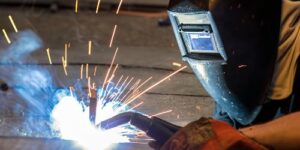
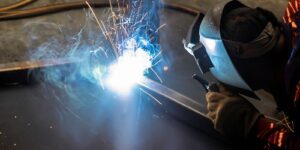

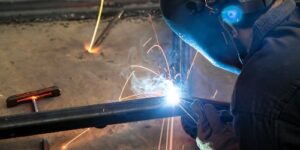

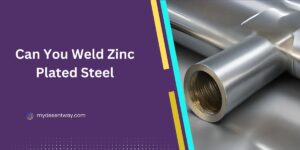

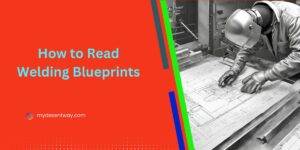




1 thought on “Can You MIG Weld in the Wind? Expert Tips for Success”